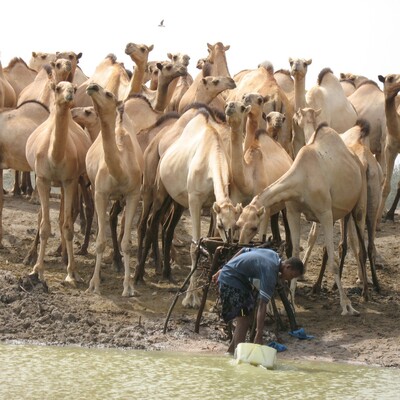
Enhancing Forecasting Capacities and Crop Capability Prediction Model/ Tool
Abstract
The negative impact of hydro-meteorological hazards on the agricultural sector oftentimes leads to food insecurity, especially in Sub-Saharan Africa (SSA). It is, therefore, incumbent upon policymakers to formulate appropriate strategies to minimize hydro-meteorological hazards' effects on communities and economies. Increased availability of timely and tailored climate-related Knowledge, information, and products supports decision-makers in reducing climate-related losses and enhancing benefits. In this regard, regional partners1 commissioned a series of studies to develop and refine a crop capability prediction tool in order to maximize agricultural productivity while limiting the consequences of hydro-meteorological risks on the food system. This tool can assist policymakers and user communities decide on the most up-to-date crop capability based on seasonal climate forecast (SCF).
To operationalize and bring maximum impact, however, roving training of trainers (ToT) workshops are required for agricultural yield prediction users, SCF providers, researchers, and academics in the Southern Africa Development Community (SADC) region. In this regard, the first of such ToT workshop was held in Harare, Zimbabwe, in July 2022. The second was held in Maputo, Mozambique. The third ToT workshop was held in Livingstone, Zambia, from 19 to 22 September 2023. The current national workshop was held in Lilongwe, Malawi, from 9-13 December 2024 and attended by over 20 professionals from the LUANAR (Lilongwe University of Agricultural Research), Ministry of Agriculture Department of Land Resources Conservation, the Department of Climate Change and Meteorological Services (DCCMS) and other relevant departments.
This ToT workshop covered a wide range of topics, including providing a conceptual framework for the Climate Agriculture Modelling and Decision Tool (CAMDT) - Decision Support System for Agrotechnology Transfer (DSSAT) platform; the importance of SCF; a ‘Hands-on’ Exercise in data management (quality control and missing values, as well as a specific template/format); data acquisition; model descriptions (assumptions and uncertainties); and model analysis (simulation and validation).
Participants' feedback indicated that running the model and interpreting its outputs were easy and acknowledged the feasibility of the tool for future applications. However, despite the availability of a user manual, participants preferred a simpler programme-assisted method so that individuals with less computer knowledge could run the model for immediate use and application. They also thought the training was extremely relevant and valuable to the user communities.
From the hands-on exercise, participants emphasized that the proper use of the SFC-driven crop capability prediction model and its timely deployment will result in large savings considering agriculture's vital role in the SADC area. Participants also recommended that the model be improved by including local circumstances and cultivars for its comprehensive applicability in Malawi and beyond. Hence, the incorporation of common crops (e.g., legumes) into the model is key. They recommend that, for this capacity-building programme to be successful and have a lasting impact, there is a need for the full support of pertinent national and regional organizations, projects, and governments in the area. More resources are also required to guarantee that developers continue to engage in model improvement and skill transfer within SADC and beyond.
Citation
Garanganga B., Nyakutambwa T., Magagula F., Amha Y., Bekele T., Rutabingwa F., Recha J. 2024. Enhancing Forecasting Capacities and Crop Capability Prediction Model/ Tool: Training of Trainers. AICCRA Report. Accelerating Impacts of CGIAR Climate Research for Africa (AICCRA).




